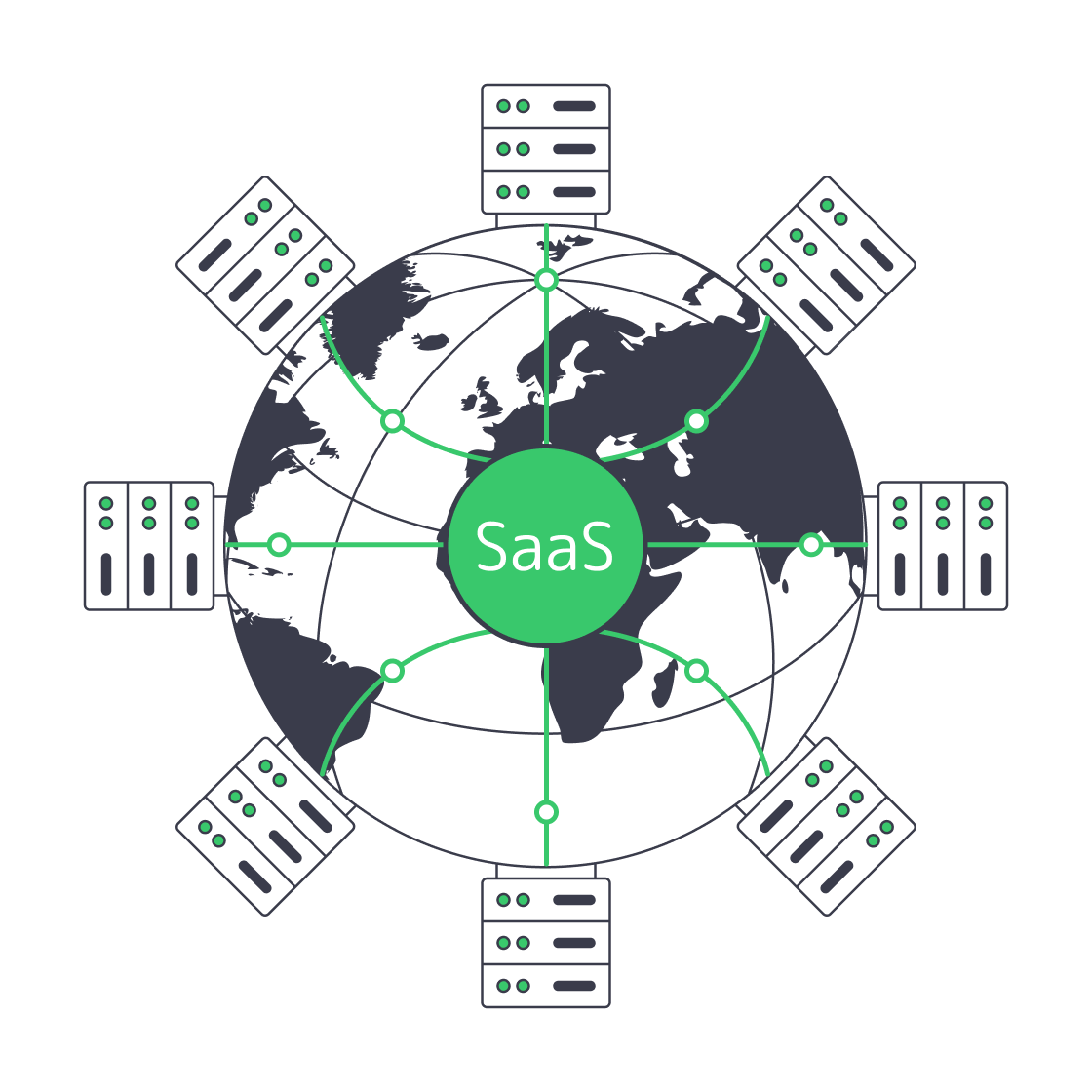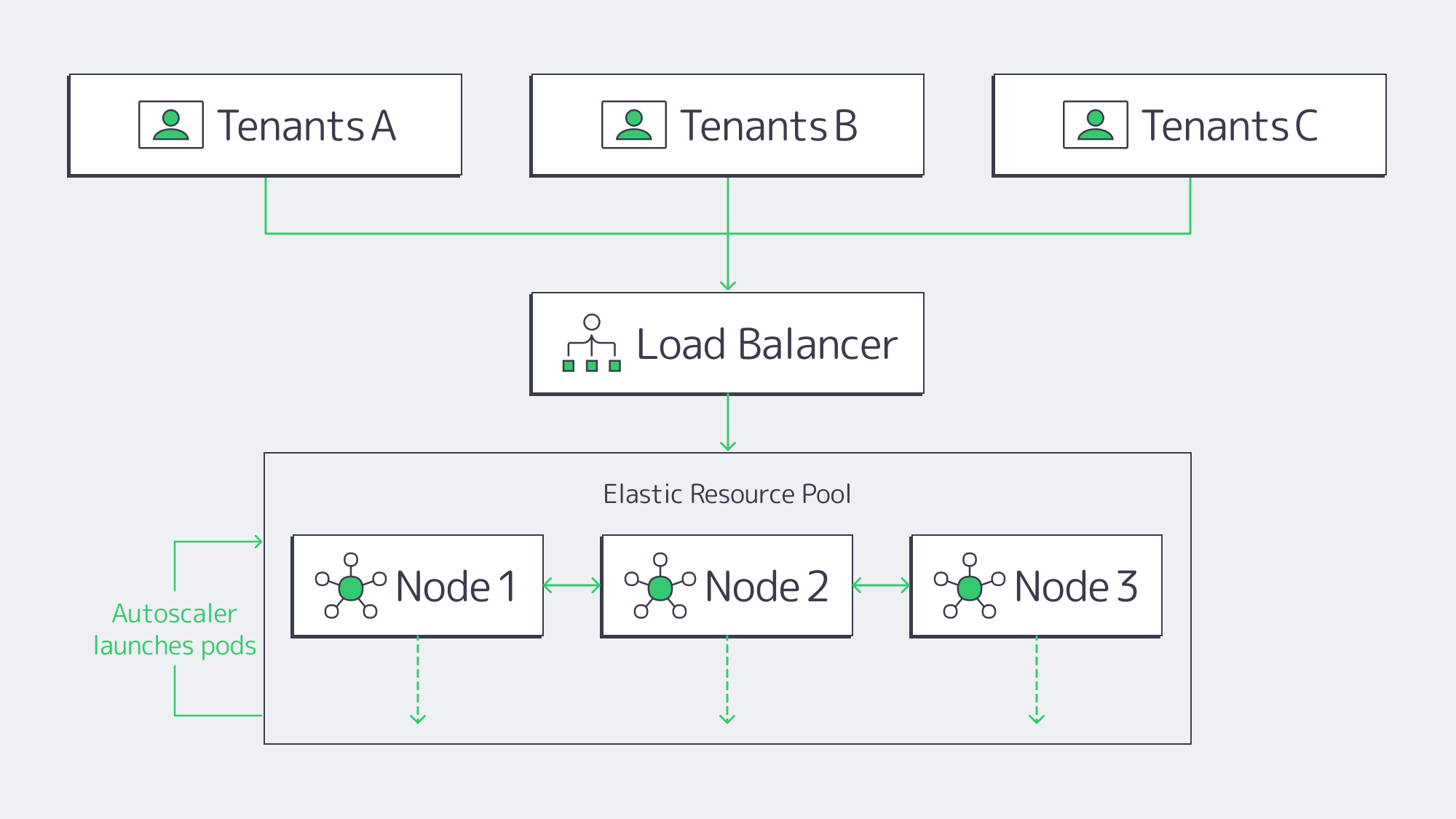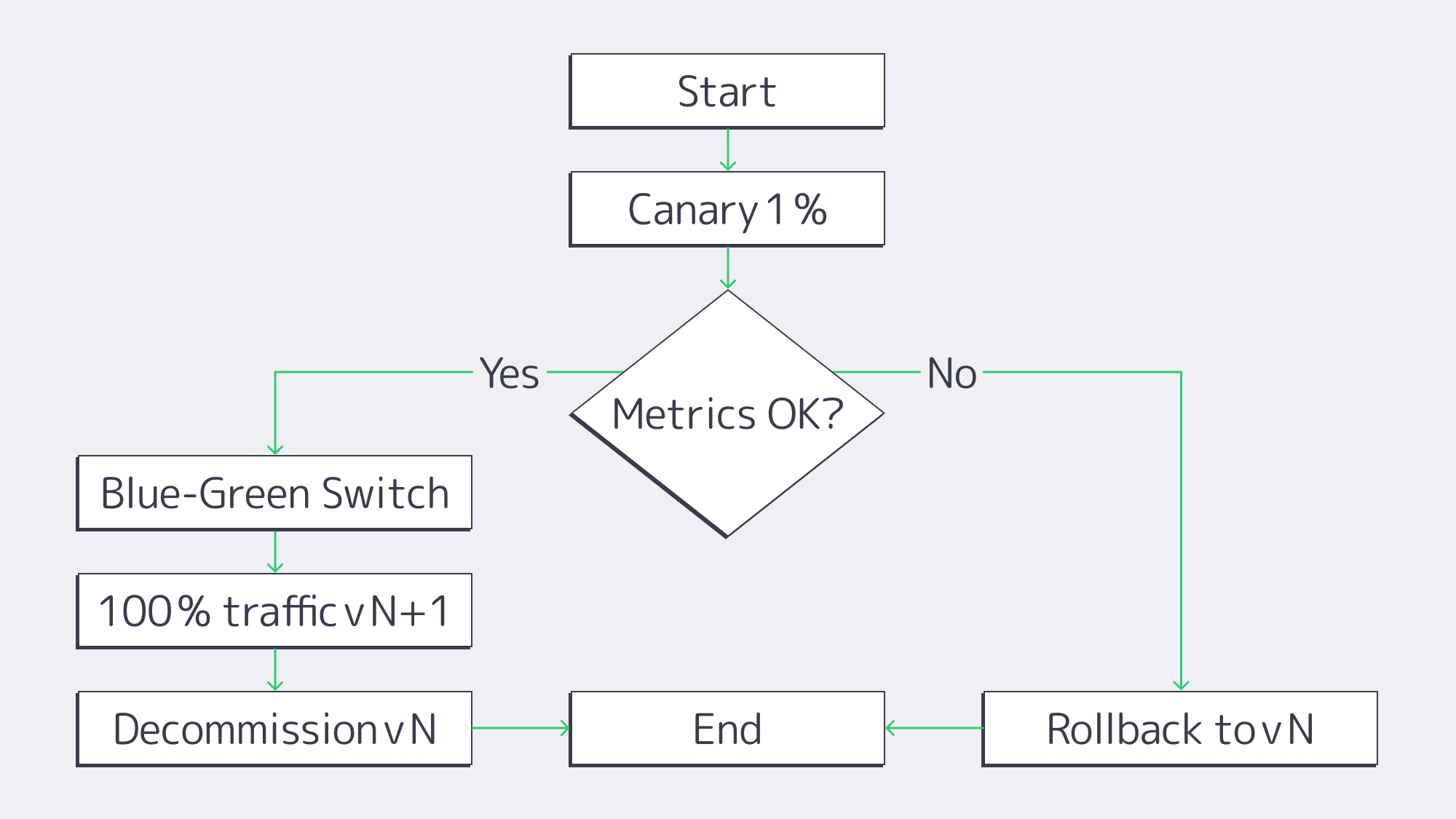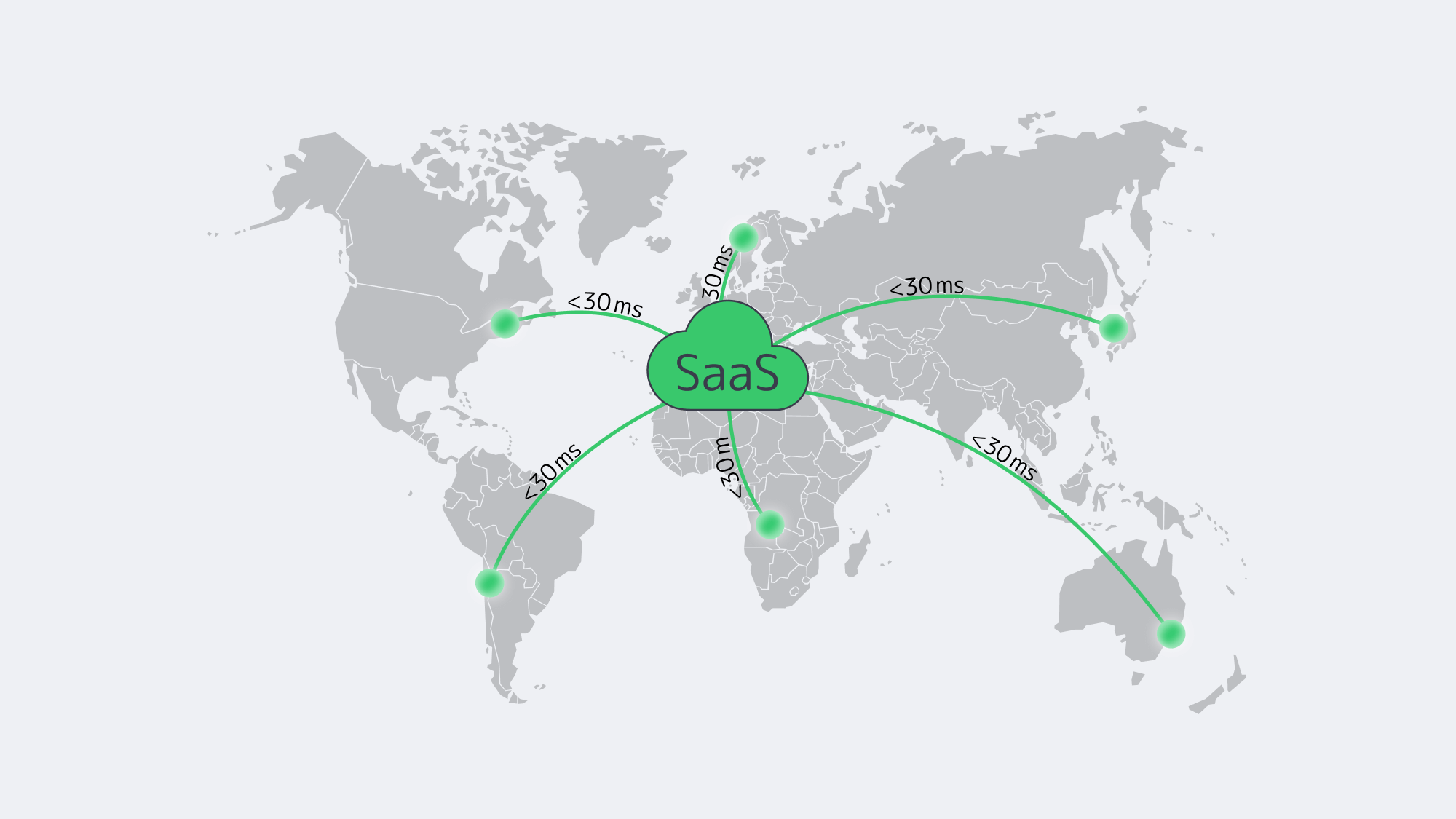Blog

Hosting SaaS Applications: Key Factors for Multi‐Tenant Environments
Cloud adoption may feel ubiquitous, yet the economics and physics of running Software-as-a-Service (SaaS) are far from solved. Analysts put total cloud revenues at $912 billion in 2025 and still rising toward the trillion-dollar mark.[1] At the same time, performance sensitivity keeps tightening: Amazon found that every 100 ms of extra latency reduced sales by roughly 1 % [2], while Akamai research shows a seven-percent drop in conversions for each additional second of load time. Hosting strategy therefore becomes a core product decision, not a back-office concern.
Public clouds and container Platform-as-a-Service (PaaS) offerings were ideal for prototypes, but their usage-metered nature introduces budget shocks. Dedicated server clusters—especially when deployed across Melbicom’s Tier III and Tier IV facilities—offer a different trajectory: deterministic performance, full control over data residency and a flat, predictable cost curve. The sections that follow explain how to architect secure, high-performance multi-tenant SaaS systems on Melbicom hardware and why the approach outperforms generic container PaaS at scale.
Multi-Tenant Reality Check — Single-Tenant Pitfalls in One Paragraph
Multi-tenant design lets one running codebase serve thousands of customers, maximising resource utilisation and simplifying upgrades. Classic single-tenant hosting, by contrast, duplicates the full stack per client, inflates operating costs and turns every release into a coordination nightmare. Except for niche compliance deals, single-tenancy is today a margin-killer. The engineering goal is therefore to make a multi-tenant system behave like dedicated infrastructure for each tenant—without paying single-tenant prices.
How Do Dedicated Server Clusters Create Elastic Resource Pools?

Every Melbicom dedicated server is a physical machine—its CPU, RAM and NVMe drives belong solely to you. Wire multiple machines into a Kubernetes or Nomad cluster and the fixed nodes become an elastic pool:
- Horizontal pod autoscaling launches or removes containers based on per-service metrics.
- cgroup quotas and namespaces cap per-tenant CPU, memory and I/O, preventing starvation.
- Cluster load-balancing keeps hot shards near hot data.
Because no hypervisor interposes, workloads reach the metal directly. Benchmarks from The New Stack showed a bare-metal Kubernetes cluster delivering roughly 2× the CPU throughput of identical workloads on virtual machines and dramatically lower tail latency.[3] Academic studies report virtualisation overheads between 5 % and 30 % depending on workload and hypervisor.[4] Practically, a spike in Tenant A’s analytics job will not degrade Tenant B’s dashboard.
Melbicom augments the design with per-server network capacity up to 200 Gbps and redundant uplinks, eliminating the NIC contention and tail spikes common in shared-cloud environments.
How Do Per-Region Controls Meet Data-Sovereignty Rules?
Regulators now legislate location: GDPR, Schrems II and similar frameworks demand strict data residency. Real compliance is easier when you own the rack. Melbicom operates 20 data centres worldwide—Tier IV Amsterdam for EU data and Tier III sites in Frankfurt, Madrid, Los Angeles, Mumbai, Singapore and more. SaaS teams deploy separate clusters per jurisdiction:
- EU tenants run exclusively on EU nodes with EU-managed encryption keys.
- U.S. tenants run on U.S. nodes with U.S. keys.
- Geo-fenced firewalls and asynchronous replication keep disaster-recovery targets low without breaching residency rules.
Because the hardware is yours, audits rely on direct evidence, not a provider’s white paper.
Zero-Downtime Rolling Upgrades

Continuous delivery is table stakes. On a Melbicom cluster the pipeline is simple:
- Canary – Route 1 % of traffic to version N + 1 and watch p95 latency.
- Blue-green – Spin up version N + 1 alongside N; flip the load-balancer VIP on success.
- Instant rollback – A single Kubernetes command reverts in seconds.
Full control of probes, disruption budgets and pod sequencing yields regular releases without maintenance windows.
How Does Physical Isolation Remove Hypervisor Cross-Talk Risks?
Logical controls (separate schemas, row-level security, JWT scopes) are stronger when paired with physical exclusivity:
- No co-located strangers. Hypervisor-escape exploits affecting multi-tenant clouds are irrelevant here—no one else’s VM runs next door.
- Hardware root of trust. Self-encrypting drives and TPM 2.0 modules bind OS images to hardware; supply-chain attestation verifies firmware at boot.
- Physical and network security. Tier III/IV data centers use biometrics and man-traps, while in-rack firewalls keep tenant VLANs isolated.
Predictable Performance Versus Container-Based PaaS Pricing
Container-PaaS billing is advertised as pay-as-you-go—vCPU-seconds, GiB-seconds and per-request fees—but the meter keeps ticking when traffic is steady. 37signals reports ≈ US $ 1 million in annual run-rate savings—and a projected US $ 10 million over five years—after repatriating Basecamp and HEY from AWS to owned racks.[5] Meanwhile, a 2024 Gartner pulse survey found that 69 % of IT leaders overshot their cloud budgets.[6]
Flat-rate dedicated clusters flip the model: you pay a predictable monthly fee per server and run it hot.
| Production-Month Cost at 100 Million Requests | Container PaaS | Melbicom Cluster |
| Compute + memory | US $ 32 (10 × GCP Cloud Run Example 1: $3.20 for 10 M req) (cloud.google.com) | US $ 1 320 (3 × € 407 ≈ US $ 440 “2× E5-2660 v4, 128 GB, 1 Gbps” servers) |
| Storage (5 TB NVMe) | US $ 400 (5 000 GB × $0.08/GB-mo gp3) (aws.amazon.com) | Included |
| Egress (50 TB) | US $ 4 300 10 TB × $0.09 + 40 TB × $0.085 (cloudflare.com, cloudzero.com) | Included |
| Total | US $ 4 732 | US $ 1 320 |
Table. Public list prices for Google Cloud Run request-based billing vs. three 24-core / 128 GB servers on a 1 Gbps unmetered plan.
Performance mirrors the cost picture: recent benchmarks show bare-metal nodes deliver sub-100 ms p99 latency versus 120–150 ms on hypervisor-backed VMs—a 20-50 % tail-latency cut.[7]
How to Achieve Global Low-Latency Delivery for SaaS

Physics still matters—roughly 10 ms RTT per 1 000 km—so locality is essential. Melbicom’s backbone links 20+ regions and feeds a 50-PoP CDN that caches static assets at the edge. Dynamic traffic lands on the nearest active cluster via BGP Anycast, holding user-perceived latency under 30 ms in most OECD cities and mid-20s for outliers. The same topology shortens database replication and accelerates TLS handshakes—critical for real-time dashboards and collaborative editing.
How Do Dedicated Clusters Improve Long-Term Economics & Flexibility?
Early-stage teams need elasticity; grown-up teams need margin. Flat-rate dedicated hosting flattens the spend curve: once hardware amortises—servers often run 5–7 years—every new tenant improves unit economics. Capacity planning is painless: Melbicom stocks 1 000+ ready-to-go configurations and can deploy extra nodes in hours. Seasonal burst? Lease for a quarter. Permanent growth? Commit for a year and capture volume discounts. GPU cards or AI accelerators slot directly into existing chassis instead of requiring a new cloud SKU.
Open-source orchestration keeps you free of platform lock-in: if strategy shifts, migrate hardware or multi-home with other providers without rewriting core code.
Dedicated Server Clusters—a Future-Proof Backbone for SaaS

SaaS providers must juggle customer isolation, regulatory scrutiny, aggressive performance targets and rising cloud costs. A cluster of dedicated bare-metal nodes reconciles those demands: hypervisor-free speed keeps every tenant fast, strict per-tenant policies and regional placement satisfy regulators, and full-stack control enables rolling releases without downtime. Crucially, the spend curve flattens as utilisation climbs, turning infrastructure from a volatile liability into a strategic asset.
Hardware is faster, APIs are friendlier, and global bare-metal capacity is now an API call away—making this the moment to shift SaaS workloads from opaque PaaS meters to predictable dedicated clusters.
Order Your Dedicated Cluster
Launch high-performance SaaS on Melbicom’s flat-rate servers today.